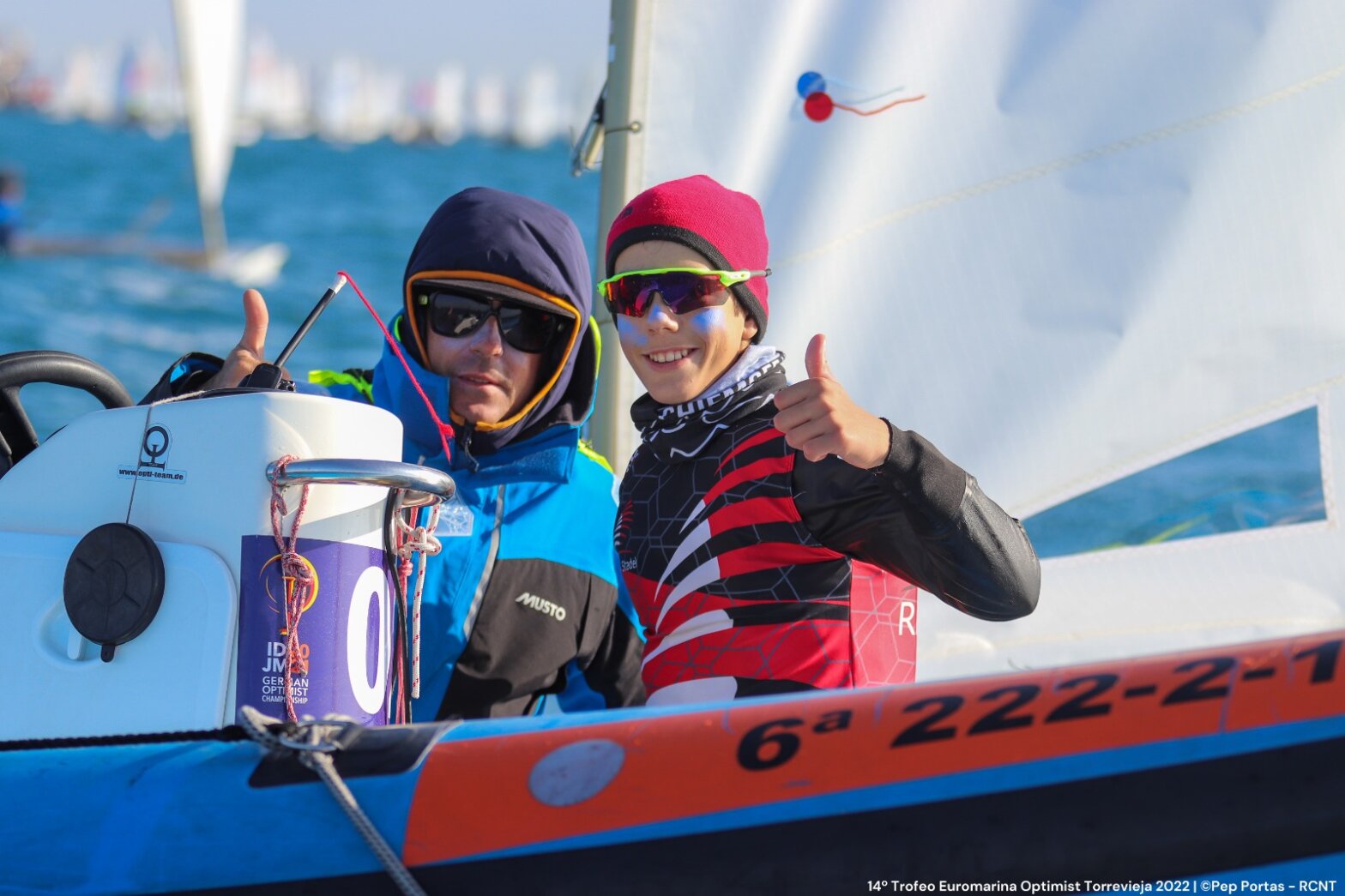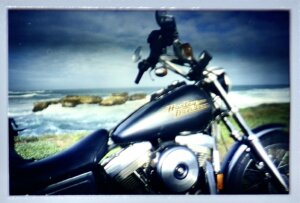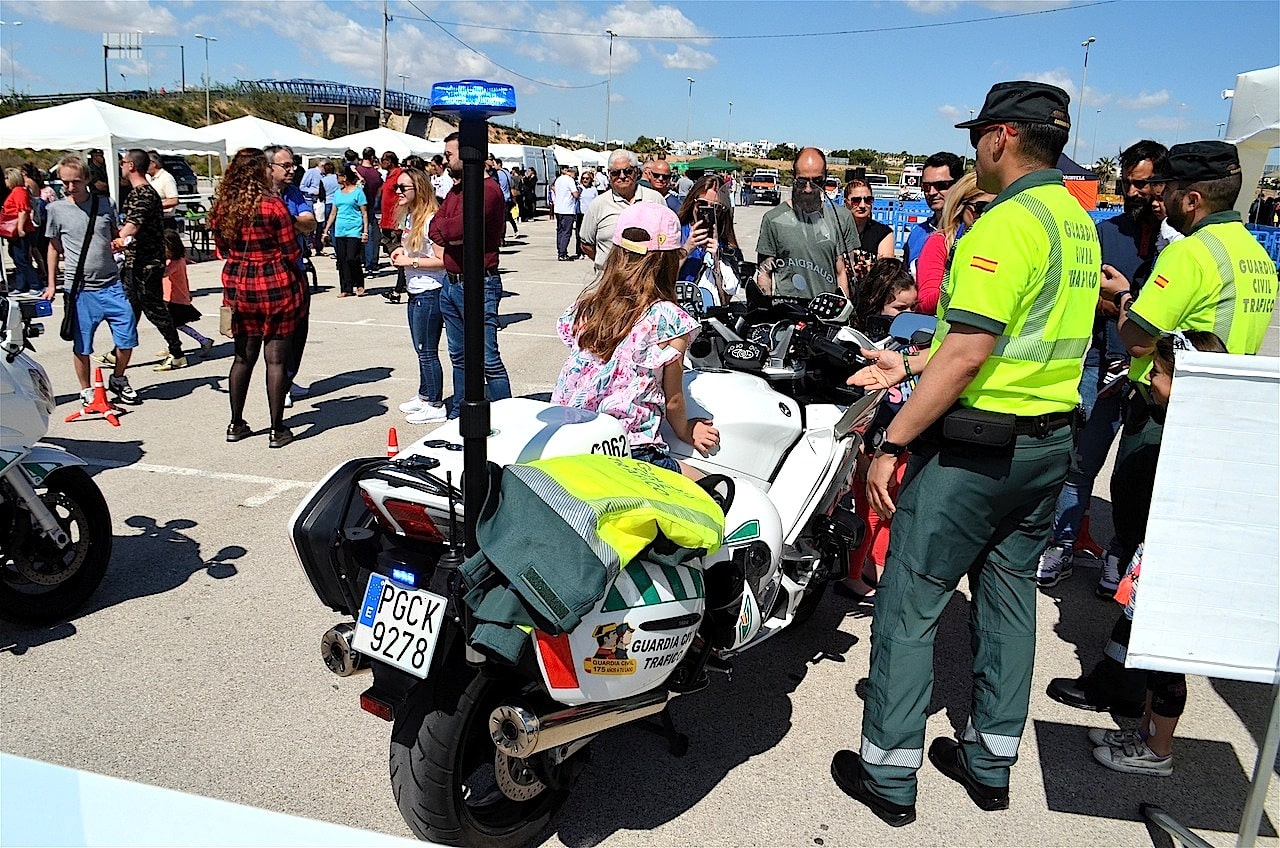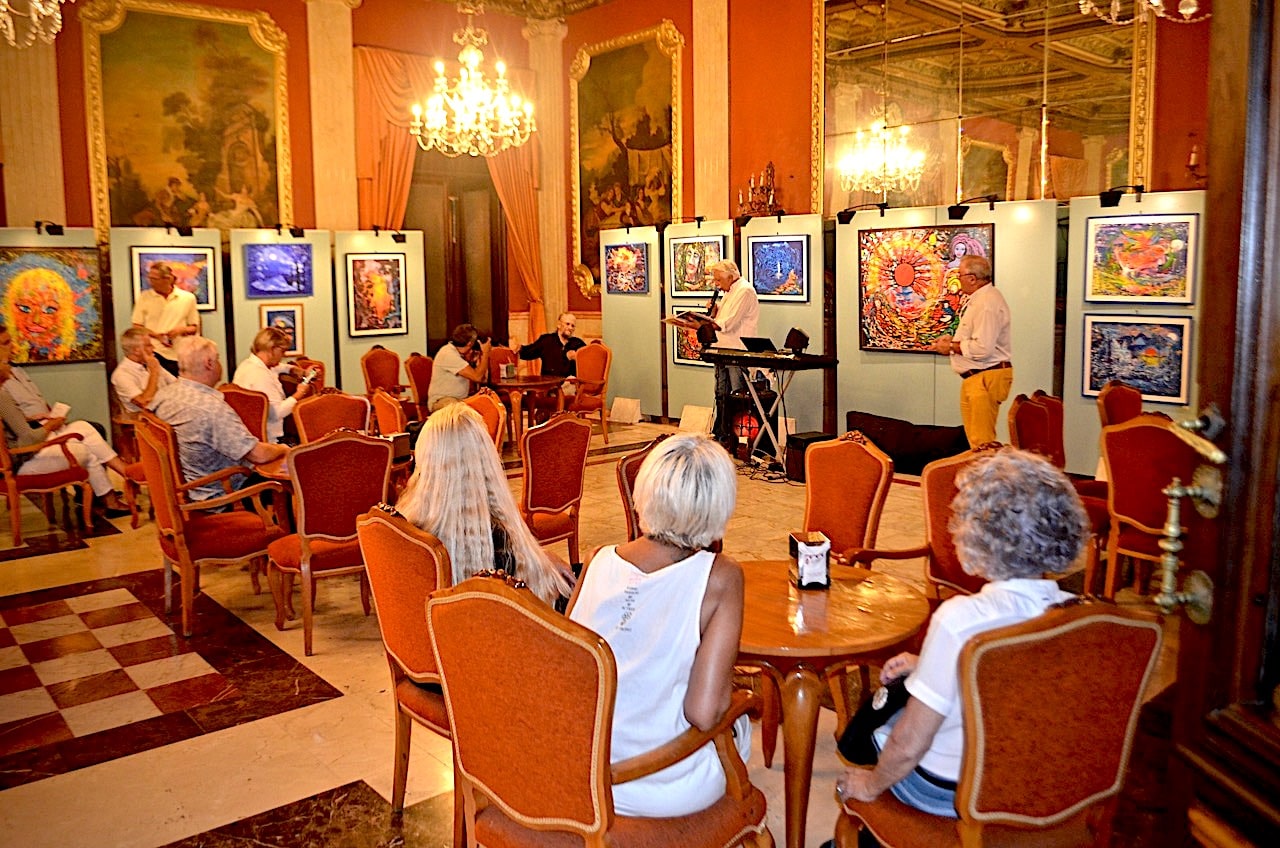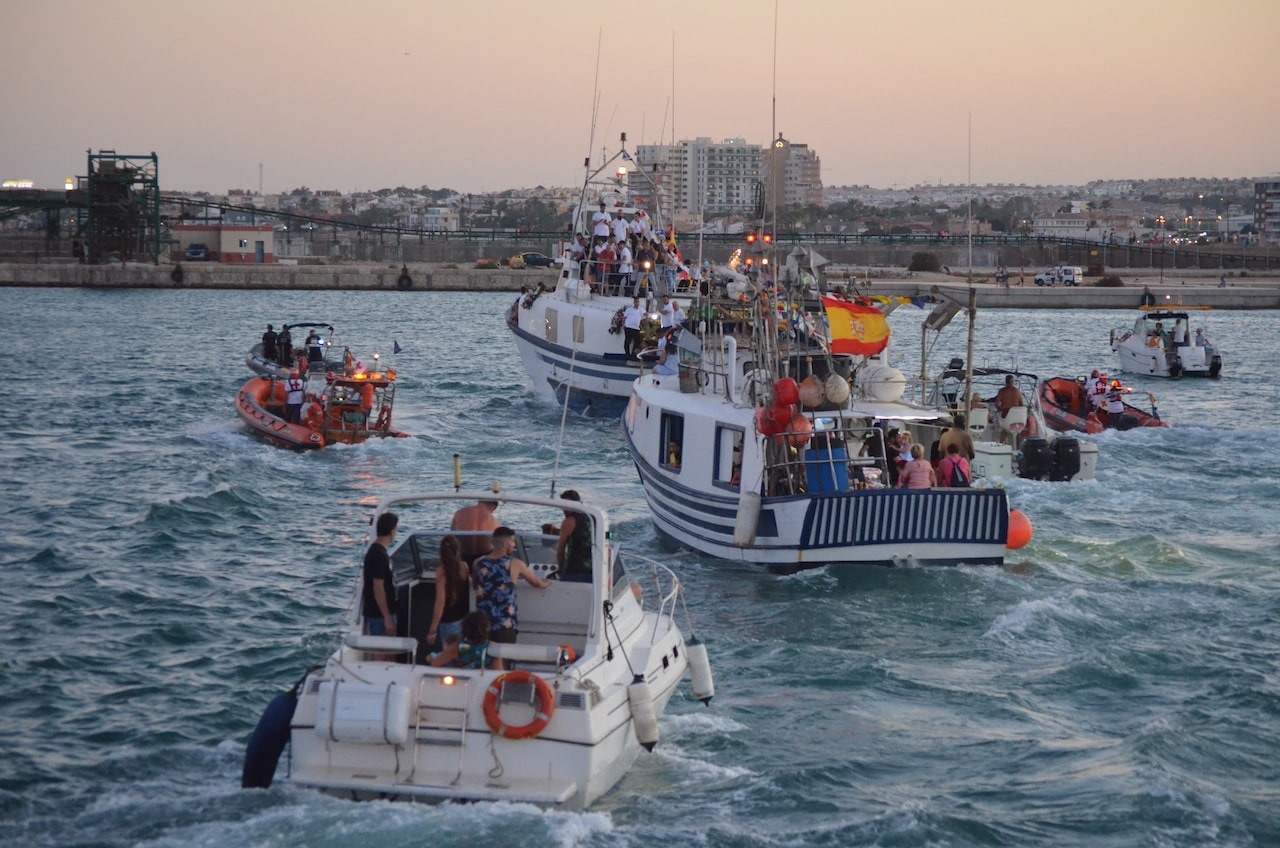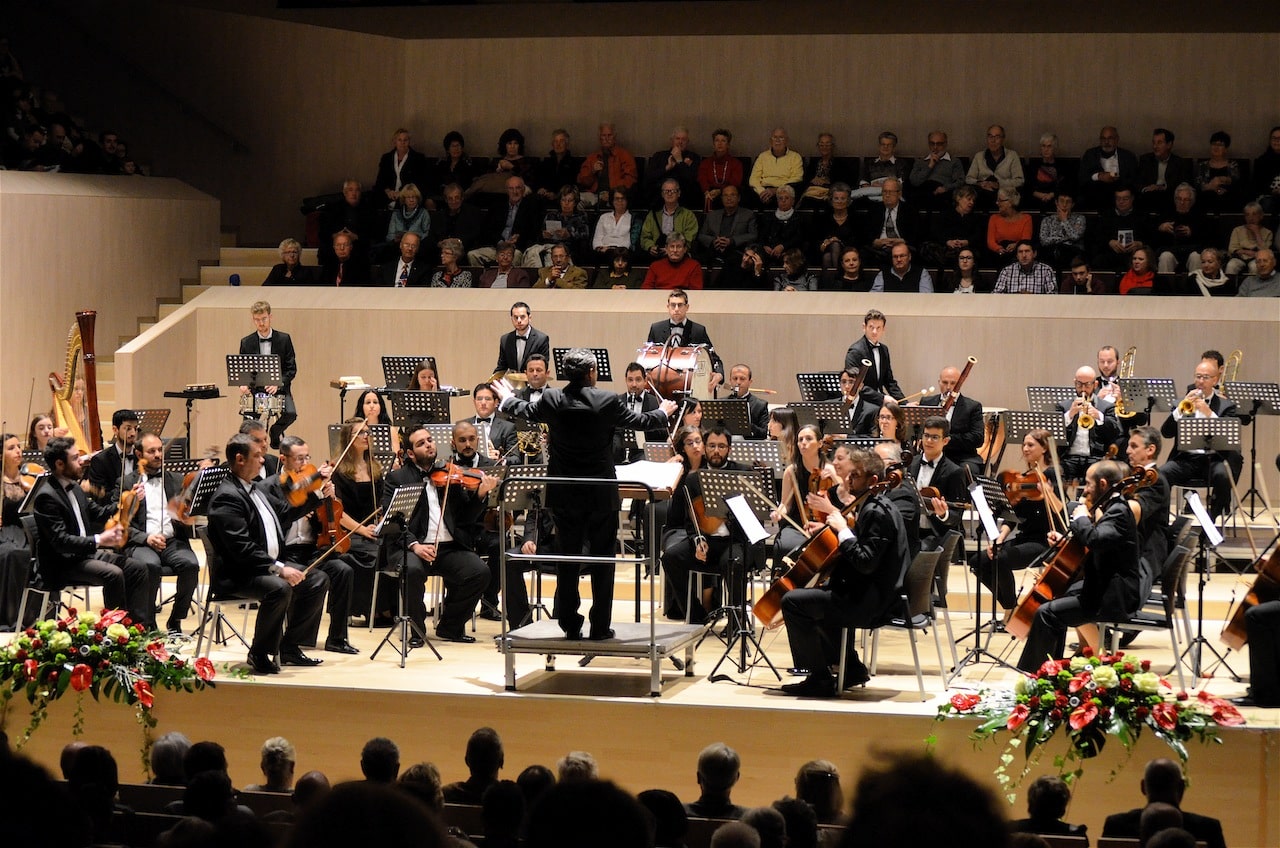Trainer Riky Stadel betreut jugendliche Segler aus Deutschland und Dänemark bei der Regatta „15. Euromarina Optimist Trophy“ in Torrevieja + + + “They are heroes!” – Coach Riky Stadel supervises young sailors from Germany and Denmark at the regatta “15th Euromarina Optimist Trophy” in Torrevieja + + + Son heroes! – Entrenador Riky Stadel entrena jovenes deportistas en la Euromarina Optimist Trophy (scroll down for Castellano & English)
Riky Stadel ist Trainer des Optimist-Kaders des Landes Valencia. Geboren in Konstanz, seit 42 Jahren in Jávea beheimatet: Der Segel-Profi betreut bei der diesjährigen Euromarina Optimist Trophy sechs Deutsche und zwei Dänen im Alter zwischen acht und 15 Jahren. Wir sprechen mit Riky über die Herausforderungen auf dem Meer und Segeln als Sport.
![]() Welche Bedeutung hat die Euromarina Optimist Trophy?
Welche Bedeutung hat die Euromarina Optimist Trophy?
![]() Das ist eine der größten Winterregatten im Mittelmeer. Da segeln in der Klasse Optimist über 400 Kinder im Alter zwischen acht und 15 Jahren mit, heuer aus 26 Nationen. Die Regatta geht um Ranglistenpunkte. Für uns ist diese Regatta ein Training, quasi die Aufwärmrunde für die diesjährige Segelsaison. Zu Ostern stehen Regatten auf dem Gardasee auf dem Kalender, im Sommer finden überall in Deutschland Segelwettbewerbe statt.
Das ist eine der größten Winterregatten im Mittelmeer. Da segeln in der Klasse Optimist über 400 Kinder im Alter zwischen acht und 15 Jahren mit, heuer aus 26 Nationen. Die Regatta geht um Ranglistenpunkte. Für uns ist diese Regatta ein Training, quasi die Aufwärmrunde für die diesjährige Segelsaison. Zu Ostern stehen Regatten auf dem Gardasee auf dem Kalender, im Sommer finden überall in Deutschland Segelwettbewerbe statt.
![]() Wie geht´s den jugendlichen Seglern an der Costa Blanca?
Wie geht´s den jugendlichen Seglern an der Costa Blanca?
![]() Wir sind vor dem Regatta-Start angereist, um das Revier kennen zu lernen. Es ist ein anderes Segeln auf dem Meer als auf Binnengewässern in Deutschland. Wellen zum Beispiel, wir hatten am ersten Tag viel Welle. Grundsätzlich, die deutschen Segler genießen hier in Torrevieja die Sonne und die Temperaturen.
Wir sind vor dem Regatta-Start angereist, um das Revier kennen zu lernen. Es ist ein anderes Segeln auf dem Meer als auf Binnengewässern in Deutschland. Wellen zum Beispiel, wir hatten am ersten Tag viel Welle. Grundsätzlich, die deutschen Segler genießen hier in Torrevieja die Sonne und die Temperaturen.

![]() Die Costa Blanca offenbart sich mit ihrem sonnigen Klima als ideales Segelrevier, richtig?
Die Costa Blanca offenbart sich mit ihrem sonnigen Klima als ideales Segelrevier, richtig?
![]() Ohne Zweifel! Valencia, Denia, Jávea, Santa Pola, Torrevieja – das sind alles Küstengemeinden, die auf den Wassersport setzen. Hier kann man ganzjährig segeln. Die Costa Blanca hat ein super Wetter! Dazu kommt die Thermik, am Cabo de la Nao zum Beispiel. Wind ist garantiert.
Ohne Zweifel! Valencia, Denia, Jávea, Santa Pola, Torrevieja – das sind alles Küstengemeinden, die auf den Wassersport setzen. Hier kann man ganzjährig segeln. Die Costa Blanca hat ein super Wetter! Dazu kommt die Thermik, am Cabo de la Nao zum Beispiel. Wind ist garantiert.
![]() Was entscheidet über den Sieg?
Was entscheidet über den Sieg?
![]() Der Schlüssel zum Erfolg ist Erfahrung! Der spanische Nachwuchs im Optimist trainiert drei bis vier Mal die Woche, das ganz Jahr hindurch, während in Mittel- und Nordeuropa in der Regel im Winter ein Mal im Monat trainiert wird. Da ist die Trainingssaison von April bis November. Das macht sich natürlich auch im Ranking bemerkbar. Die Spanier haben so gute Chancen, auf die ersten Plätze zu kommen.
Der Schlüssel zum Erfolg ist Erfahrung! Der spanische Nachwuchs im Optimist trainiert drei bis vier Mal die Woche, das ganz Jahr hindurch, während in Mittel- und Nordeuropa in der Regel im Winter ein Mal im Monat trainiert wird. Da ist die Trainingssaison von April bis November. Das macht sich natürlich auch im Ranking bemerkbar. Die Spanier haben so gute Chancen, auf die ersten Plätze zu kommen.
![]() Eine Regatta dieser Größenordnung setzt gewiss großen organisatorischen Aufwand voraus…
Eine Regatta dieser Größenordnung setzt gewiss großen organisatorischen Aufwand voraus…
![]() Da sind viele dran beteiligt. Der Jachtclub bindet seine Mitarbeiter ein. Sponsoren tragen dazu bei, das Event zu finanzieren. Wir als Trainer betreuen die Kinder auch in ihrer Unterbringung in den Hotels und Ferienapartments. Auf dem Wasser kommt auf zehn jugendliche Segler zur Sicherheit immer ein Dinghi mit Fahrer. Bei den Regatten dieses Wochenende sind vor der Küste von Torrevieja an die 40 Zodiacs unterwegs…
Da sind viele dran beteiligt. Der Jachtclub bindet seine Mitarbeiter ein. Sponsoren tragen dazu bei, das Event zu finanzieren. Wir als Trainer betreuen die Kinder auch in ihrer Unterbringung in den Hotels und Ferienapartments. Auf dem Wasser kommt auf zehn jugendliche Segler zur Sicherheit immer ein Dinghi mit Fahrer. Bei den Regatten dieses Wochenende sind vor der Küste von Torrevieja an die 40 Zodiacs unterwegs…
![]() Was erwartet den Segelnachwuchs bei der Regatta?
Was erwartet den Segelnachwuchs bei der Regatta?
![]() Wir sind gestern nach dem Frühstück um 8.15 Uhr gestartet. Erst kurz vor sechs waren wir zurück im Hafen, das sind über neun Stunden auf dem Wasser. Das war ein langer Tag! Jeder Regatta-Lauf dauert im Schnitt 45 Minuten. Gestern haben wir drei Läufe gehabt. Jeweils rund 100 Opti´s gehen zum Start. Zwischendurch war der Wind weg, ein Lauf musste verzögert werden.
Wir sind gestern nach dem Frühstück um 8.15 Uhr gestartet. Erst kurz vor sechs waren wir zurück im Hafen, das sind über neun Stunden auf dem Wasser. Das war ein langer Tag! Jeder Regatta-Lauf dauert im Schnitt 45 Minuten. Gestern haben wir drei Läufe gehabt. Jeweils rund 100 Opti´s gehen zum Start. Zwischendurch war der Wind weg, ein Lauf musste verzögert werden.
![]() Eine echte Herausforderung für die Kinder…
Eine echte Herausforderung für die Kinder…
![]() Ja. Das sind Helden! Es ist viel Arbeit für die Kinder, so viele Stunden auf dem Wasser zu sein. Aber es macht ihnen Freude, es ist schließlich ein spannender Wettkampf, jedes Kind will gewinnen. Wichtig bleibt, dass die Kinder auch in Zukunft weiter Segeln, nicht nur im Optimist. Der Optimist mag für die meisten die Einsteigerklasse in den Sport sein, aber danach kommen Jollenklassen wie Laser, 29er, J70, Europe, später vielleicht mal Hochsee-Jachten.
Ja. Das sind Helden! Es ist viel Arbeit für die Kinder, so viele Stunden auf dem Wasser zu sein. Aber es macht ihnen Freude, es ist schließlich ein spannender Wettkampf, jedes Kind will gewinnen. Wichtig bleibt, dass die Kinder auch in Zukunft weiter Segeln, nicht nur im Optimist. Der Optimist mag für die meisten die Einsteigerklasse in den Sport sein, aber danach kommen Jollenklassen wie Laser, 29er, J70, Europe, später vielleicht mal Hochsee-Jachten.
![]() Wie ist der Regattakurs der Euromarina Optimist Trophy konzipiert?
Wie ist der Regattakurs der Euromarina Optimist Trophy konzipiert?
![]() Das ist ein Trapezkurs mit Start gegen den Wind, gefolgt von einem Halbwindkurs, einem Vorwindkurs und einer Kreuz gegen den Wind zur Ziellinie.
Das ist ein Trapezkurs mit Start gegen den Wind, gefolgt von einem Halbwindkurs, einem Vorwindkurs und einer Kreuz gegen den Wind zur Ziellinie.
![]() Da werden sich viele Kohlenhydrate verbrannt. Was gibt´s zu Essen?
Da werden sich viele Kohlenhydrate verbrannt. Was gibt´s zu Essen?
![]() Die Kinder machen sich ihre Sandwiches selbst oder kaufen welche und nehmen sie in ihrer Box mit an Bord für den Tag. Zwischen den Starts legen wir uns Päckchen, das heißt Bordwand an Bordwand mit den Zodiacs. Abends stellt der Real Club Náutico das Essen, gestern gab es Paella, heute Pasta.
Die Kinder machen sich ihre Sandwiches selbst oder kaufen welche und nehmen sie in ihrer Box mit an Bord für den Tag. Zwischen den Starts legen wir uns Päckchen, das heißt Bordwand an Bordwand mit den Zodiacs. Abends stellt der Real Club Náutico das Essen, gestern gab es Paella, heute Pasta.
![]() Es ist die Tage ziemlich frisch draußen auf dem Meer, oder?
Es ist die Tage ziemlich frisch draußen auf dem Meer, oder?
![]() Die Segler tragen alle Neopren, sieben Millimeter dick, das hält warm. Und während der Wettkämpfe sind sie fit am Ruder und der Großschot beschäftigt, da kommt man gut und gerne ganz schön ins Schwitzen.
Die Segler tragen alle Neopren, sieben Millimeter dick, das hält warm. Und während der Wettkämpfe sind sie fit am Ruder und der Großschot beschäftigt, da kommt man gut und gerne ganz schön ins Schwitzen.
![]() Mädchen segeln auch mit?
Mädchen segeln auch mit?
![]() Ja, Segeln ist schließlich kein Männersport. Bei der Euromarina Optimist Trophy sind 130 Mädchen am Start, das entspricht knapp einem Drittel des Starterfelds.
Ja, Segeln ist schließlich kein Männersport. Bei der Euromarina Optimist Trophy sind 130 Mädchen am Start, das entspricht knapp einem Drittel des Starterfelds.
![]() Segeln ist ein Sport, der fit hält…
Segeln ist ein Sport, der fit hält…
![]() Ja, Segeln ist der kompletteste Sport überhaupt! Sowohl Kopf wie Körper werden trainiert. Das ist ja nicht nur so, dass Du Dich in der Fußleine über das Freibord raushängst, um Wind und Welle auszureiten. Wir machen viel Fitnesstraining – Bauchmuskeln, Beine, Oberkörper, Rücken. Und auf dem Wasser im Wettkampf musst du dich konzentrieren. Was macht der Gegner? Wo ist der beste Wind? Segeln ist einfach genial!
Ja, Segeln ist der kompletteste Sport überhaupt! Sowohl Kopf wie Körper werden trainiert. Das ist ja nicht nur so, dass Du Dich in der Fußleine über das Freibord raushängst, um Wind und Welle auszureiten. Wir machen viel Fitnesstraining – Bauchmuskeln, Beine, Oberkörper, Rücken. Und auf dem Wasser im Wettkampf musst du dich konzentrieren. Was macht der Gegner? Wo ist der beste Wind? Segeln ist einfach genial!
ENGLISH
Riky Stadel is coach of the Optimist squad of the Valencian Country. Born in Konstanz, he has been based in Jávea for 42 years: The sailing professional is coaching six Germans and two Danes at this year’s Euromarina Optimist Trophy. We speak with Riky about the challenges on the sea and sailing as a great sport.
![]() What is the significance of the Euromarina Optimist Trophy?
What is the significance of the Euromarina Optimist Trophy?
![]() This is one of the biggest winter regattas in the Mediterranean. There are over 400 children between the ages of eight and 15 sailing in the Optimist class, this year from 26 nations. The regatta is for ranking points. For us, this regatta is training, a kind of warm-up for this year’s sailing season. At Easter there are regattas on Lake Garda on the calendar, and in the summer there are sailing competitions all over Germany.
This is one of the biggest winter regattas in the Mediterranean. There are over 400 children between the ages of eight and 15 sailing in the Optimist class, this year from 26 nations. The regatta is for ranking points. For us, this regatta is training, a kind of warm-up for this year’s sailing season. At Easter there are regattas on Lake Garda on the calendar, and in the summer there are sailing competitions all over Germany.
![]() How are the young sailors on the Costa Blanca doing?
How are the young sailors on the Costa Blanca doing?
![]() We arrived before the start of the regatta to get to know the area. It is different sailing on the sea than on inland waters in Germany. Waves for example, we had a lot of wave on the first day. Basically, the German sailors enjoy the sun and the temperatures here in Torrevieja.
We arrived before the start of the regatta to get to know the area. It is different sailing on the sea than on inland waters in Germany. Waves for example, we had a lot of wave on the first day. Basically, the German sailors enjoy the sun and the temperatures here in Torrevieja.
![]() The Costa Blanca reveals itself as an ideal sailing area with its sunny climate, right?
The Costa Blanca reveals itself as an ideal sailing area with its sunny climate, right?
![]() Without a doubt! Valencia, Denia, Jávea, Santa Pola, Torrevieja – these are all coastal communities that focus on water sports. Here you can sail all year round. The Costa Blanca has great weather! In addition, there are thermals, at Cabo de la Nao, for example. Wind is guaranteed.
Without a doubt! Valencia, Denia, Jávea, Santa Pola, Torrevieja – these are all coastal communities that focus on water sports. Here you can sail all year round. The Costa Blanca has great weather! In addition, there are thermals, at Cabo de la Nao, for example. Wind is guaranteed.
![]() What decides about the victory?
What decides about the victory?
![]() The key to success is experience! The young Spanish Optimists train three to four times a week, all year round, whereas in Central and Northern Europe they usually train once a month, and not at all in winter. Of course, this is also reflected in the rankings. The Spaniards therefore have a good chance of finishing in first place.
The key to success is experience! The young Spanish Optimists train three to four times a week, all year round, whereas in Central and Northern Europe they usually train once a month, and not at all in winter. Of course, this is also reflected in the rankings. The Spaniards therefore have a good chance of finishing in first place.
![]() A regatta of this magnitude certainly requires a lot of organizational effort…
A regatta of this magnitude certainly requires a lot of organizational effort…
![]() Yes, there are a lot of people working on such an event. The Real Club Náutico de Torrevieja involves all its staff. Sponsors help to finance the event. We as coaches also look after the children in their accommodation in the hotels or vacation apartments. On the water, there is always one dinghy with driver for every ten young sailors for safety. During the regattas this weekend, there are about 40 Zodiacs cruising off the coast of Torrevieja…
Yes, there are a lot of people working on such an event. The Real Club Náutico de Torrevieja involves all its staff. Sponsors help to finance the event. We as coaches also look after the children in their accommodation in the hotels or vacation apartments. On the water, there is always one dinghy with driver for every ten young sailors for safety. During the regattas this weekend, there are about 40 Zodiacs cruising off the coast of Torrevieja…
![]() What awaits the young sailors day after day at the regatta?
What awaits the young sailors day after day at the regatta?
![]() We started yesterday after breakfast at 8.15 am. We were back in port at just before 6pm, that’s more than nine hours on the water. That was a long day! Each regatta run takes an average of 45 minutes. With so many participants, several heats are sailed. Each time 107 Opti’s go to the start, that’s a long starting line. During the day, once the wind was gone, so one run had to be postponed.
We started yesterday after breakfast at 8.15 am. We were back in port at just before 6pm, that’s more than nine hours on the water. That was a long day! Each regatta run takes an average of 45 minutes. With so many participants, several heats are sailed. Each time 107 Opti’s go to the start, that’s a long starting line. During the day, once the wind was gone, so one run had to be postponed.
![]() Pretty much a challenge for the kids!
Pretty much a challenge for the kids!
![]() Yes. They are heroes! It is a lot of work for the children being so many hours on the sea. It´s competitive and they have fun. Every kid wnats to win. And then, it is important that the children continue sailing in the future, not only in the Optimist class. The Optimist may be the entry class into the sport for most, but then come dinghy classes such as Laser, 29er, J70, Europe, and later also yachts.
Yes. They are heroes! It is a lot of work for the children being so many hours on the sea. It´s competitive and they have fun. Every kid wnats to win. And then, it is important that the children continue sailing in the future, not only in the Optimist class. The Optimist may be the entry class into the sport for most, but then come dinghy classes such as Laser, 29er, J70, Europe, and later also yachts.
![]() How is the regatta course of the Euromarina Optimist Trophy designed?
How is the regatta course of the Euromarina Optimist Trophy designed?
![]() It’s a trapeze course with a start upwind, followed by a half-wind course, a downwind course and a cross upwind to the finish line.
It’s a trapeze course with a start upwind, followed by a half-wind course, a downwind course and a cross upwind to the finish line.
![]() How is the catering solved?
How is the catering solved?
![]() The children make their own sandwiches and take them in the box. Between the starts we make packets, that is, sideboard to sideboard with the accompanying boats. In the evening the Real Club Náutico provides the food, yesterday we had paella, today pasta.
The children make their own sandwiches and take them in the box. Between the starts we make packets, that is, sideboard to sideboard with the accompanying boats. In the evening the Real Club Náutico provides the food, yesterday we had paella, today pasta.
![]() It must be pretty fresh out there on the sea these days, right?
It must be pretty fresh out there on the sea these days, right?
![]() The sailors all wear neoprene, seven millimeters thick, which keeps them warm. And during the competitions they are busy at the helm and the mainsheet, so it’s not hard to work up a sweat.
The sailors all wear neoprene, seven millimeters thick, which keeps them warm. And during the competitions they are busy at the helm and the mainsheet, so it’s not hard to work up a sweat.
![]() Girls sail too?
Girls sail too?
![]() Yes, sailing is not a male sport after all. There are 130 girls at the start of the Euromarina Optimist Trophy, which is almost one third of the starting field.
Yes, sailing is not a male sport after all. There are 130 girls at the start of the Euromarina Optimist Trophy, which is almost one third of the starting field.
![]() Sailing is a sport that keeps you fit…
Sailing is a sport that keeps you fit…
![]() Yes, sailing is the most complete sport of all! Both head and body are trained. It’s not just hanging out in the foot line over the freeboard to ride out the wind and waves. We do a lot of fitness training – abs, legs, upper body, back. And on the water in competition, you have to focus. What is your opponent doing? Where is the best wind? Sailing is just really awesome!
Yes, sailing is the most complete sport of all! Both head and body are trained. It’s not just hanging out in the foot line over the freeboard to ride out the wind and waves. We do a lot of fitness training – abs, legs, upper body, back. And on the water in competition, you have to focus. What is your opponent doing? Where is the best wind? Sailing is just really awesome!
CASTELLANO
„Son unos heroes!“
El entrenador Riky Stadel supervisa a jóvenes regatistas de Alemania y Dinamarca en la regata “XV Trofeo Euromarina de Optimist” en Torrevieja
Riky Stadel es entrenador del equipo Optimist de Valencia. Nacido en Constanza (Alemania) y afincado en Jávea desde hace 42 años, el profesional de la vela entrena este año a seis alemanes y dos daneses de entre ocho y 15 años en el Trofeo Euromarina Optimist. Hablamos con Riky sobre los retos en la mar y sobre la vela como deporte.
¿Qué importancia tiene la Euromarina Optimist Trophy?
Es una de las mayores regatas de invierno del Mediterráneo. Más de 400 niños de entre 8 y 15 años navegan este año en la clase Optimist, procedentes de 26 países. La regata es puntuable para el ranking. Para nosotros, esta regata es un entrenamiento, la ronda de calentamiento para la temporada de vela de este año, por así decirlo. En Semana Santa hay regatas en el lago de Garda en el calendario, y en verano hay competiciones de vela por toda Alemania.
¿Cómo les va a los jóvenes navegantes aqui en la Costa Blanca?
Llegamos antes del inicio de la regata para conocer la zona. Es diferente navegar por el mar que por aguas interiores en Alemania. Por ejemplo, el primer día tuvimos muchas olas. Básicamente, los navegantes alemanes disfrutan del sol y las temperaturas aquí en Torrevieja.
Con su clima soleado, la Costa Blanca se revela como una zona ideal para navegar, ¿cierto?
¡Sin duda! Valencia, Denia, Jávea, Santa Pola, Torrevieja: todas estos son municipios costeros enfocados en los deportes náuticos. Aquí se puede navegar todo el año. En la Costa Blanca hace buen tiempo. Y luego están las térmicas, en el Cabo de la Nao, por ejemplo. El viento está garantizado.
¿Qué factores deciden sobre alcanzar el podio?
¡La clave del éxito es la experiencia! Los regatistas españoles de Optimist junior entrenan de tres a cuatro veces por semana, durante todo el año, mientras que en Europa Central y del Norte suelen entrenar una vez al mes en invierno. Allí, la temporada de entrenamiento va de abril a noviembre. Por supuesto, esto también influye en la clasificación. Así pues, los españoles tienen muchas posibilidades de llegar a los primeros rangos.
Una regata de esta envergadura requiere sin duda un gran esfuerzo organizativo…
Participan muchas personas. El club náutico implica a sus empleados. Los patrocinadores ayudan a financiar el acontecimiento. Nosotros, como entrenadores, también cuidamos de los niños en su alojamiento en los hoteles y pisos de vacaciones. En el agua, siempre hay un bote con conductor por cada diez jóvenes navegantes por razones de seguridad. Durante las regatas de este fin de semana, hay unas 40 zodiacs frente a la costa de Torrevieja…
¿Qué les espera a los jóvenes regatistas en la regata?
Empezamos ayer después del desayuno a las 8.15 de la mañana. No volvimos al puerto hasta poco antes de las seis, lo que supone más de nueve horas en el agua. ¡Ha sido un día muy largo! Cada regata dura una media de 45 minutos. Ayer tuvimos tres series. Alrededor de 100 Opti tomaron la salida en cada ocasión. Entre tanto viento, hubo que retrasar una carrera.
Todo un reto para los niños….
Sí. ¡Son héroes! Es mucho trabajo para los niños estar tantas horas en el agua. Pero lo disfrutan, al fin y al cabo es una competición emocionante, todos los niños quieren ganar. Sigue siendo importante que los niños continúen navegando en el futuro, no sólo en Optimist. El Optimist puede ser la clase de iniciación para la mayoría de ellos, pero después vienen las clases de vela ligera como el Laser, 29er, J70, Europe, y más tarde quizás los yates de alta mar.
¿Cómo está diseñado el campo de regatas del Trofeo Euromarina Optimist?
Es un recorrido trapezoidal con una salida a barlovento, seguida de un recorrido a medio viento, un recorrido a sotavento y un cruce a barlovento hasta la línea de meta.
Ahí es donde se queman muchos carbohidratos. ¿Qué hay para comer?
Los niños se hacen sus propios bocadillos o los compran y se los llevan a bordo en su caja para el día. Entre lancha y lancha, hacemos piques, es decir, de barco a barco con las zodiacs. Por la noche el Real Club Náutico proporciona la comida, ayer comimos paella, hoy pasta.
Hace bastante frío en el mar estos días, ¿no?
Todos los marineros llevan neopreno, de siete milímetros de grosor, que les mantiene calientes. Y durante las competiciones están ocupados con el timón y la escota de mayor, por lo que es fácil sudar la gota gorda.
¿Las chicas también navegan?
Sí, la vela no es un deporte masculino después de todo. Hay 130 chicas en la salida del Trofeo Euromarina de Optimist, lo que supone casi un tercio del campo de salida.
La vela es un deporte que te mantiene en forma…
¡Sí, la vela es el deporte más completo de todos! Tanto la cabeza como el cuerpo están entrenados. No es sólo que te cuelgues en la relinga inferior sobre el francobordo para capear el viento y las olas. Hacemos mucho entrenamiento físico: abdominales, piernas, parte superior del cuerpo, espalda. Y en el agua, en competición, hay que concentrarse. ¿Qué hace el adversario? ¿Dónde sopla el mejor viento? ¡La vela es sencillamente un deporte genial!
Mehr lesen | read more | leer más:
Real Club Náutico de Torrevieja (RCNT):
Resultate:
https://www.torreviejaoptitrophy.com/es/default/races/race
Homepage des Haupt-Sponsors:
Reportage über Segelsport an der Costa Blanca:
#CostaBlancaLEBEN#euromarinaoptimisttorrevieja#somvela#in2sailing#torrevieja#optimist#sailing#mediterranean

